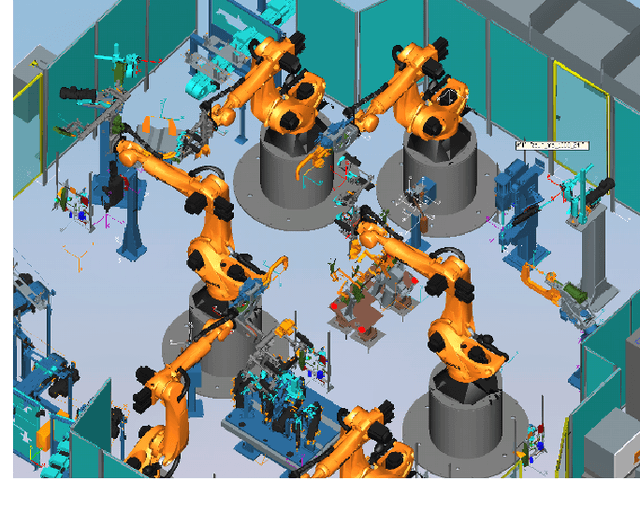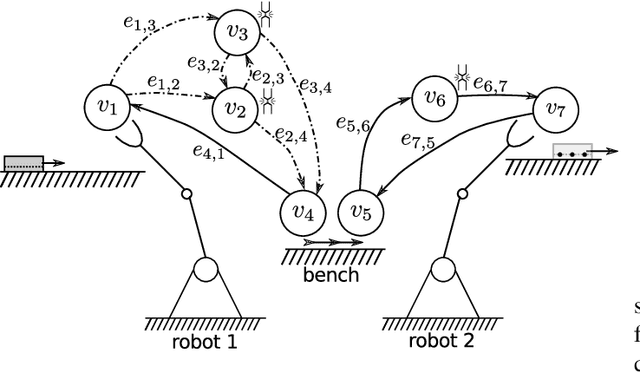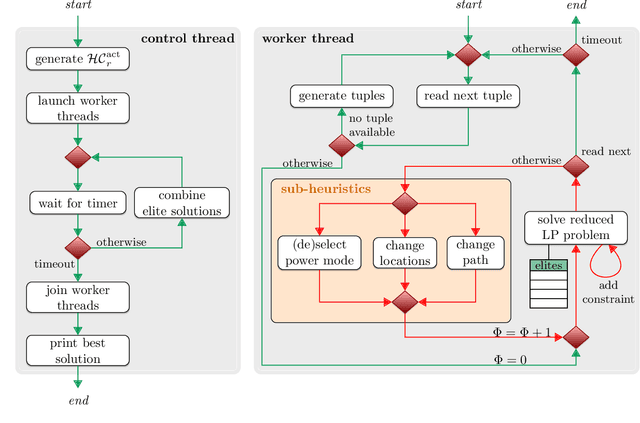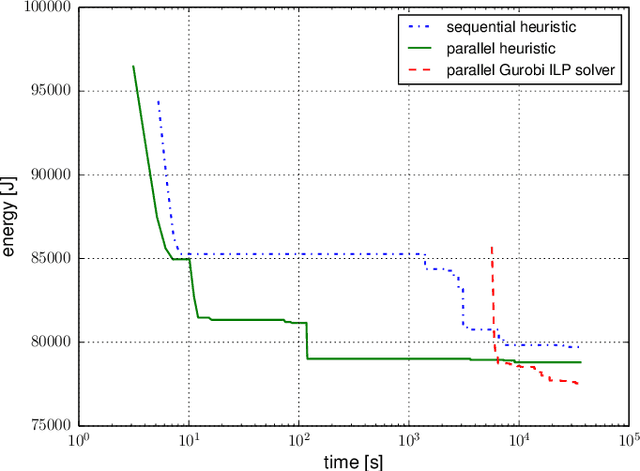Libor Bukata
Energy Optimization of Robotic Cells
Feb 16, 2018



Abstract:This study focuses on the energy optimization of industrial robotic cells, which is essential for sustainable production in the long term. A holistic approach that considers a robotic cell as a whole toward minimizing energy consumption is proposed. The mathematical model, which takes into account various robot speeds, positions, power-saving modes, and alternative orders of operations, can be transformed into a mixed-integer linear programming formulation that is, however, suitable only for small instances. To optimize complex robotic cells, a hybrid heuristic accelerated by using multicore processors and the Gurobi simplex method for piecewise linear convex functions is implemented. The experimental results showed that the heuristic solved 93 % of instances with a solution quality close to a proven lower bound. Moreover, compared with the existing works, which typically address problems with three to four robots, this study solved real-size problem instances with up to 12 robots and considered more optimization aspects. The proposed algorithms were also applied on an existing robotic cell in \v{S}koda Auto. The outcomes, based on simulations and measurements, indicate that, compared with the previous state (at maximal robot speeds and without deeper power-saving modes), the energy consumption can be reduced by about 20 % merely by optimizing the robot speeds and applying power-saving modes. All the software and generated datasets used in this research are publicly available.
* Journal paper published in IEEE Industrial Informatics
Solving the Resource Constrained Project Scheduling Problem Using the Parallel Tabu Search Designed for the CUDA Platform
Nov 13, 2017



Abstract:In the paper, a parallel Tabu Search algorithm for the Resource Constrained Project Scheduling Problem is proposed. To deal with this NP-hard combinatorial problem many optimizations have been performed. For example, a resource evaluation algorithm is selected by a heuristic and an effective Tabu List was designed. In addition to that, a capacity-indexed resource evaluation algorithm was proposed and the GPU (Graphics Processing Unit) version uses a homogeneous model to reduce the required communication bandwidth. According to the experiments, the GPU version outperforms the optimized parallel CPU version with respect to the computational time and the quality of solutions. In comparison with other existing heuristics, the proposed solution often gives better quality solutions.
* Published in Journal of Parallel and Distributed Computing
 Add to Chrome
Add to Chrome Add to Firefox
Add to Firefox Add to Edge
Add to Edge